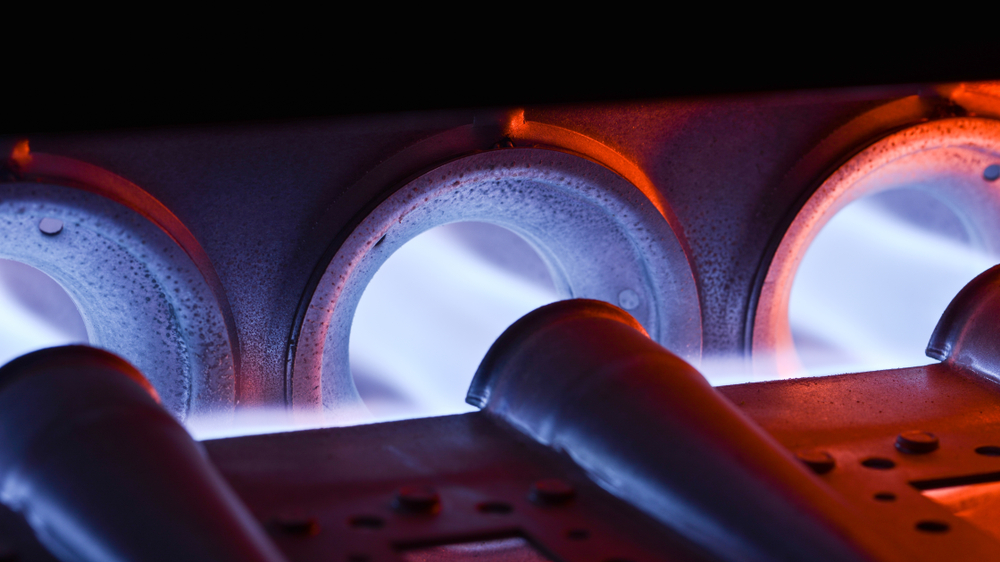What Does a Facility Manager Do? Key Roles and Outsourcing Benefits

Skilled facilities management professionals are essential for maintaining safe, efficient, and productive workspaces in organizations. Understanding the details of the facilities manager job description is the first step to improving operational efficiency, ensuring compliance, and optimizing space utilization.
What is a Facility Management Professional?
A facility management professional (FMP) runs and maintains a building or group of buildings. They focus on efficiently and effectively providing logistics and support services related to property and buildings.
This role involves a wide range of responsibilities to ensure the facilities are safe, efficient, and suitable for the activities they are designed to support. This job combines multiple disciplines to ensure the built environment’s functionality, comfort, safety, and efficiency by coordinating people, places, processes, and technology.
Key aspects of the role include:
- Maintenance and repairs: Managing the upkeep of all building systems, such as HVAC, plumbing, and electrical, ensuring they operate efficiently and reliably.
- Safety and security: Implementing and maintaining safety protocols, ensuring compliance with health and safety regulations, and managing security systems and procedures to protect the facility and its occupants.
- Space management: Strategically planning and optimizing space within the building to effectively meet the organization’s needs.
- Budget management: Creating and managing budgets for facility operations, including costs related to maintenance, repairs, and capital improvements.
- Vendor management: Coordinating and supervising the work of external contractors and service providers to ensure quality and cost-effectiveness.
- Sustainability: Developing and executing sustainable practices to reduce the facility’s environmental impact, such as energy conservation and waste reduction initiatives.
- Emergency preparedness: Formulating and implementing emergency response plans to handle potential emergencies like fires, natural disasters, and other crises efficiently.
Understanding the Facilities Manager Job Description
A facilities management professional needs a broad skill set, including technical expertise and problem-solving skills.
The team at Omnia360 offers comprehensive services to support these functions, including bundled services, integrated facility solutions, and on-site support to enhance facility operations and ensure efficiency.
Technical Knowledge
A facilities manager needs to understand building systems and infrastructure. This includes knowledge of HVAC systems, plumbing, electrical setups, and general maintenance.
This knowledge helps the facilities manager oversee repairs, ensure systems work well, and predict potential issues before they become big problems.
Project Management
The successful operation of a facilities manager relies heavily on the effective management of projects. This multifaceted skill set involves meticulous planning, hands-on execution, and thorough oversight of diverse projects, including renovations, system upgrades, and space reconfigurations.
Omnia360’s dedicated facility managers provide comprehensive project management services, meticulously guiding each project from its initial planning stages to successful completion. With a keen focus on overseeing timelines, budgets, and resources, these managers ensure that projects are delivered on time and within financial constraints.
Leveraging project management skills, facility managers coordinate multiple tasks simultaneously, consistently delivering successful outcomes aligning with the organization’s requirements.
Financial Awareness
A facilities manager must be skilled at managing money effectively to create and manage budgets. This means planning for everyday costs, keeping up with maintenance expenses, and making big improvements.
Omnia360’s bundled services offer affordable solutions by combining many services under one provider, making managing money and controlling budgets easier. By handling budgets carefully, the facilities manager ensures resources are used well, and the organization gets the most for its investments.
Communication Skills
Facilities managers must communicate effectively with building occupants, senior management, and external vendors to ensure everyone is informed about maintenance schedules, safety rules, and any issues affecting their work.
Related Post: How Do Facility Management Companies Ensure Building Safety?
Omnia360’s integrated facility solutions facilitate communication and coordination, making processes more transparent and efficient. Strong interpersonal skills make it easier to build a collaborative environment, coordinate efforts, and solve problems.
Problem-Solving
A successful facilities manager demonstrates a proactive approach to problem-solving by quickly identifying and addressing issues, anticipating potential problems, and implementing preventative measures.
Our on-site solutions provide businesses with dedicated support to promptly and effectively resolve issues. The facilities manager’s strong problem-solving skills enable efficient navigation of challenges, ensuring smooth operations and minimal disruptions. This capability is crucial for maintaining a safe and efficient environment.
Leadership
Leadership is an essential skill for facilities managers, who often oversee a team of facility staff and coordinate with various departments. Effective leadership involves guiding and motivating team members, delegating tasks appropriately, and fostering a positive and productive work environment.
Leveraging Omnia360’s Facility Management Services
Outsourcing facilities management is a strategic choice for many organizations.
Related Post: What are ‘Hard’ and ‘Soft’ Facility Management Services?
Collaborating with a specialized provider enables companies to access specialized services, lower operational expenses, and devote more attention to their primary business operations.
Benefits of Outsourcing Facilities Management
- Cost Efficiency
Outsourcing facilities management can lead to significant cost savings. Our bundled services combine multiple facility management tasks under one provider, streamlining operations and reducing expenses. This approach eliminates the need for multiple vendors, lowers administrative costs, and leverages economies of scale.
- Access to Expertise
Our team brings extensive industry experience to the table. Integrated facility solutions provide businesses access to a team of experts who can manage everything from routine maintenance to complex projects.
This ensures that all aspects of facility management are handled professionally and efficiently.
- Focus on Core Activities
By outsourcing facilities management, organizations can concentrate on their primary business functions.
Omnia360’s comprehensive services cover all facility-related tasks, allowing internal teams to focus on strategic goals and core competencies without the distraction of facility issues.
- Scalability and Flexibility
Omnia360 offers scalable solutions that can adapt to an organization’s changing needs.
Whether you need Site-Based Solutions for dedicated on-site support or Mobile Solutions for flexible, on-the-go maintenance, Omnia360 can tailor our services to fit your requirements. This flexibility ensures your facility management strategy can grow and evolve with your business.
- Improved Efficiency and Performance
With project management expertise, organizations can ensure all projects are completed on time, within budget, and to the highest standards. Our coordinated approach to managing projects, vendors, and maintenance activities improves operational efficiency and building performance.
- Enhanced Safety and Compliance
We’ll help your organization maintain compliance with health, safety, and environmental regulations. Omnia360’s proactive maintenance and vendor management services ensure that all aspects of facility operations meet the required standards, reducing risk and providing a safe environment for occupants.
Omnia360’s Service Offerings
- Mobile Solutions: Provide on-the-go access to maintenance services, ensuring timely responses to facility issues.
- Project Management: Oversee renovations, system upgrades, and space reconfigurations, ensuring projects are completed efficiently and effectively.
- Bundled Services: Combine multiple facility management tasks under one provider, streamlining operations and reducing costs.
- Integrated Facility Solutions: Offer a holistic approach to facility management, covering all aspects of operations, maintenance, and support.
- Site-Based Solutions: Provide dedicated, on-site support for immediate and effective issue resolution.
- Vendor Management: Handle the coordination and oversight of external contractors, ensuring high-quality service delivery and streamlined operations.
Contact Omnia360 for a Free Assessment
Outsourcing facilities management to a provider like Omnia360 can significantly enhance your building operations’ efficiency, cost-effectiveness, and overall performance. Get in touch with our team at 833-360-6642, apply for a position, or request a FREE assessment.
The Role of Environmental Services Technicians in Facility Management

In facility management, environmental services technicians keep our spaces clean, safe, and conducive to productivity.
Their work aims to maintain environmental quality in commercial, industrial, and institutional settings.
What is an Environmental Services Technician?
An environmental services technician maintains indoor spaces’ cleanliness, hygiene, and safety standards.
Related Post: Factors Affecting Commercial Cleaning Costs
You might see these professionals at office buildings, hospitals, manufacturing facilities, or educational institutions. An environmental services technician’s primary goal is to make sure these spaces meet regulatory requirements and provide a healthy atmosphere for occupants.
Environmental Services Technician Job Description
The job description of an environmental services technician encompasses many responsibilities specific to the facility they serve.
Related Post: Commercial Janitorial Services and Facility Solutions
Omnia360 is currently hiring environmental services technicians for roles like housekeeping, laundry attendant, and supervisor.
Here’s a summary of some typical tasks associated with this role.
- Cleaning and sanitization: Environmental services technicians clean and sanitize areas within a facility, including restrooms, common areas, and workspaces. This involves cleaning agents, equipment, and techniques to eliminate dirt, germs, and other contaminants.
- Waste management: Environmental technicians collect and dispose of waste materials according to regulatory guidelines. This may involve handling hazardous materials safely, especially in environments like hospitals, and ensuring compliance with waste disposal regulations.
- Indoor air quality management: Indoor air quality (IAQ) significantly impacts the health and well-being of building occupants. In this job, you might be expected to monitor and improve IAQ through ventilation maintenance, air filtration, and pollutant control.
- Emergency response: Technicians are expected to respond swiftly to emergencies such as spills, leaks, or contamination.
- Compliance and documentation: Technicians are responsible for understanding relevant regulations. This may involve conducting inspections, documenting procedures, and reporting non-compliance issues.
- Training and education: This role may also provide training and education for best practices for environmental hygiene, waste management, and safety protocols.
Role of Environmental Service Technicians in Facility Management
Environmental services technicians bring their expertise to ensure commercial, industrial, and institutional spaces remain in top-notch condition.
What sets Omnia360’s environmental services technicians apart is their tailored approach to each facility’s specific requirements, whether an office building, a hospital, or a manufacturing facility.
In addition to their expertise in cleaning and maintenance, environmental services technicians contribute to facility management’s overall efficiency and cost-effectiveness. Omnia360’s integrated solutions streamline processes, eliminating the need for multiple service providers, resulting in reduced overhead costs.
Partnering with Omnia360’s service technicians means elevated responsiveness in facility management. Operating 24/7, we’re available to address any cleaning or maintenance issues as they happen. This around-the-clock availability provides peace of mind and enhances operations efficiency.
Quality assurance is another top priority for environmental technicians, who conduct regular inspections to ensure that their service meets high standards of excellence.
Related Post: How Regular Janitorial Inspections Save You Money by Omnia360
Businesses can entrust the upkeep of their spaces to capable hands, allowing them to concentrate on other core services while ensuring a clean environment.
Facility Management With Omnia360
Collaborating with environmental service technicians results in cleaner, healthier, and more sustainable spaces. Learn more about Omnia360’s integrated facility management services, apply for a position, or request a FREE assessment.
What Is Sick Building Syndrome?

Few issues are as important as the health and well-being of customers and employees.
One threat to your company’s health is sick-building syndrome (SBS). Partnering with a team like Omnia360 means creating safe indoor environments that foster productivity, comfort, and health.
What Is Sick Building Syndrome?
Sick building syndrome describes symptoms experienced by people who spend time in one building or area of the building without any identifiable cause.
These symptoms can include headaches, dizziness, fatigue, nausea, and irritation of the eyes, nose, or throat. While the exact cause of SBS is often elusive, it’s widely attributed to poor indoor air quality and other environmental factors within the building.
What Causes Sick Building Syndrome?
Several factors contribute to the development of sick building syndrome:
Poor Indoor Air Quality
Inadequate ventilation can increase indoor pollutants, including volatile organic compounds (VOCs), mold spores, and other allergens. These contaminants can trigger respiratory issues and exacerbate existing health conditions.
Biological Contaminants
Damp, humid environments are an ideal breeding ground for mold, bacteria, and other biological contaminants. Exposure to mold and bacteria can lead to respiratory problems and allergic reactions, contributing to SBS symptoms.
Chemical Pollutants
Certain building materials, furnishings, and cleaning products release chemicals into the air, known as off-gassing. Prolonged exposure to chemicals can cause respiratory irritation and other health issues.
Poor Ergonomics and Comfort
Inadequate lighting, uncomfortable temperatures, and poorly designed workspaces can contribute to discomfort and fatigue, exacerbating SBS symptoms like headaches.
How Can Facility Management Services Prevent Sick Building Syndrome?
Sick building syndrome is multifaceted, so the best approach to tackling unhealthy indoor environments is a holistic facility management strategy.
Here’s how our services can help prevent SBS:
1. HVAC services: Our experienced technicians conduct regular maintenance and inspections of HVAC systems to ensure performance and indoor air quality are up to standards.
These services include cleaning and replacing air filters, checking for leaks or ductwork issues, and calibrating thermostat settings for comfort and efficiency.
Related Post: How Often Should Commercial HVAC be Serviced?
2. Cleaning services: We employ eco-friendly cleaning practices and products to eliminate dust, dirt, and other contaminants from indoor surfaces.
To minimize the risk of SBS-causing pollutants, comprehensive janitorial services encompass all building areas, including high-touch surfaces, carpets, upholstery, and ventilation systems.
3. Indoor air quality monitoring: We utilize advanced monitoring technology to assess indoor air quality levels and identify potential sources of contamination.
Monitoring key indicators such as humidity, temperature, and particulate matter concentrations can address issues before they escalate and impact occupant health.
4. Plumbing maintenance and leak detection: Plumbing maintenance prevents moisture buildup and water damage, which leads to mold growth and indoor air quality issues.
The team at Omnia360 conducts regular inspections of plumbing systems to identify leaks or water damage in pipes, fixtures, and surrounding areas. Proactive measures such as installing moisture sensors and leak detection systems can provide early warning of potential plumbing issues.
Contact Omnia360
Contact us at (833) 360-6642 to learn more about our comprehensive facility management services. We’ll help you create indoor environments that promote productivity and comfort.
What Is Condition-Based Monitoring?

Foreseeing potential issues and proactively addressing them is a game-changer.
Condition-based monitoring is a maintenance method of constantly monitoring the condition of your systems using sensors and data to stay informed. This method keeps your business informed on maintenance trends, which can help predict future issues.
We’ll share how facility management services leverage this strategy to enhance efficiency and save businesses money.
Understanding Condition-Based Monitoring
Condition-based monitoring (CBM) is a proactive maintenance strategy relying on real-time data to assess the health of equipment and assets.
Unlike traditional reactive maintenance, where repairs occur after a breakdown, CBM enables predictive maintenance by continuously monitoring the condition of equipment. This approach involves analyzing data like vibrations, temperature, and pressure to identify potential issues before they escalate into major problems.
Real-World Example of Condition Monitoring
Let’s consider a manufacturing facility that relies on a critical conveyor belt system.
In a traditional setup, the maintenance team might follow a fixed schedule for belt replacements, leading to unnecessary downtime and costs. With condition-based monitoring, sensors are strategically placed on the conveyor system to monitor factors like belt tension, vibration, and temperature.
Related Post: What’s the Difference – Preventive vs. Predictive Maintenance
If the sensors detect deviations from the correct temperature range, an alert is triggered. The maintenance team can then intervene with targeted repairs or replacements, preventing breakdowns and minimizing downtime.
This approach ensures the longevity of the conveyor system and reduces the overall maintenance costs compared to scheduled replacements.
How Facility Management Services Utilize Condition-Based Monitoring
By integrating condition-based monitoring into our toolkit, the team at Omnia360 can help maintain the smooth operation of commercial and industrial spaces.
Proactive Equipment Maintenance
CBM allows facility management teams to monitor the health of essential equipment like HVAC, elevators, and electrical systems. By identifying potential issues before they escalate, management can schedule targeted maintenance, preventing costly breakdowns and extending the lifespan of equipment.
Energy Efficiency Optimization
Energy consumption is a significant cost for many facilities. CBM can be applied to monitor and optimize energy usage by identifying inefficiencies in systems such as lighting, heating, and cooling.
Enhanced Space Utilization
Facility managers can make informed decisions about space allocation by analyzing data on foot traffic, room occupancy, and environmental conditions.
How Condition-Based Monitoring Can Save Your Business Money
Reduced Downtime and Productivity Loss
The proactive nature of CBM ensures that potential issues are identified before leading to equipment failure, significantly reducing unplanned downtime.
Related Post: Enhancing Efficiency: Industrial Plants & Integrated Facility Solutions
Proactive monitoring allows businesses to maintain uninterrupted operations.
Optimized Maintenance Cost
Traditional maintenance strategies often involve routine replacements, regardless of the actual condition of the equipment.
CBM enables targeted maintenance interventions, eliminating the need for unnecessary, costly replacements. This optimization of maintenance costs ensures resources are allocated efficiently, maximizing the ROI of facility management services.
Extended Asset Lifespan
By addressing potential issues before they escalate, CBM contributes to the extended lifespan of critical assets. This means businesses can get more value from their investments in equipment, reducing the frequency of replacements and the associated capital expenditures.
Omnia360 Can Help Your Business Run Efficiently
By proactively monitoring equipment, businesses can experience substantial savings while ensuring efficient operation. Every dollar counts, so contact Omnia360 at (833) 360-6642 to start meeting your productivity goals.
Your Guide to Winterize Your Landscaping

Winterizing your landscaping is crucial for the health and longevity of your plants and the overall appeal of your property.
In this guide from Omnia360, we’ll share the steps to ensure your landscaping thrives despite the cold temperatures.
Pruning and Trimming
One of the first tasks in winterizing your landscaping is to prune and trim your plants and trees. Remove any dead or diseased branches. They are more susceptible to breakage under the weight of snow and ice. Proper pruning promotes healthier growth in the spring and reduces the risk of winter damage.
Omnia360 recommends scheduling pruning sessions in late fall or early winter to allow plants to enter dormancy without the stress of recent cuts.
Mulching for Insulation
A layer of mulch around the base of trees, shrubs, and perennial plants provides insulation and protection during winter. Mulch helps regulate soil temperature, preventing extreme fluctuations that can harm roots. A 2-4 inch layer of organic mulch, such as bark or compost, is ideal for retaining moisture and providing a buffer against freezing temperatures.
Related Post: Commercial Landscape Maintenance Guide
We want to emphasize the importance of keeping mulch a few inches away from the base of trees and plants to prevent rot and discourage pests.
Watering, Hydration, and Sprinkler Systems
Hydration is crucial for plant survival during winter, especially evergreens that continue to lose moisture through their leaves. Before the ground freezes, ensure your landscaping receives a thorough watering. Well-hydrated plants are better equipped to withstand winter stress and are more resilient to freezing temperatures.
Pay attention to the moisture levels throughout the winter, providing supplemental water during dry spells when the ground is not frozen.
Winterizing a Commercial Sprinkler System
This step is crucial to protect your system from freezing temperatures, which can lead to costly damage.
Follow these steps to winterize your commercial sprinkler system:
Shut Off the Water Supply
Locate the main shut-off valve for your sprinkler system and turn it off. This valve is usually in a heated area like a utility room or basement.
Drain the System
After turning off the water supply, drain the water from the sprinkler system. Open all the drain valves and low-point drains, allowing water to flow out. Ensure that water is completely drained from the mainline, lateral lines, and all the sprinkler heads.
Open Drain Valves
Open all the drain valves and test cocks on backflow preventers. This step is crucial for preventing water from freezing inside the components.
Use Compressed Air
Connect an air compressor to the system using a proper fitting. Gradually increase the air pressure, starting from the furthest sprinkler head from the compressor. Blow out each zone separately until no water comes out of the heads. Repeat this process for each zone in the system.
Check Pressure
Monitor the air pressure during the blowout process, ensuring it stays within the recommended range for your sprinkler system. Excessive pressure can damage the system.
Inspect and Clean Sprinkler Heads
While the system is depressurized, inspect and clean all sprinkler heads. Remove any dirt, debris, or mineral buildup that may affect the system’s performance.
Protect Backflow Preventer
Wrap the backflow preventer with insulation or a thermal blanket to shield it from extreme temperatures. This is especially important as backflow preventers are sensitive to freezing conditions.
Store or Protect Components
Remove and store above-ground components, such as backflow preventers and controllers. If removal is not possible, consider insulating these parts.
Clearly label shut-off valves, backflow preventers, and other critical components. This documentation will be helpful during the spring start-up.
Monitor Weather Conditions
If unseasonably cold weather is predicted, take additional precautions, such as adding insulation or scheduling an extra blowout.
If you’re unsure about any aspect of the process or lack the necessary equipment, contact the team at Omnia360 for a thorough winterization process.
Protecting Vulnerable Plants
Some plants, especially newly planted or tender varieties, are more susceptible to winter damage.
Protective coverings such as burlap wraps or frost blankets provide insulation while allowing air circulation, preventing heat buildup, and reducing the risk of diseases. Remove the covers during milder days to allow the plants access to sunlight and fresh air.
Snow and Ice Removal
Heavy snow can lead to bent or broken branches, especially on evergreens. Safely remove excess snow from branches using a broom to prevent damage.
Related Post: What are ‘Hard’ and ‘Soft’ Facility Management Services?
Ice accumulation is another concern, weighing down branches and causing breakage. We advise against using salt-based de-icers near plants, which can harm the soil and roots. Environmentally friendly alternatives such as sand or calcium magnesium acetate can improve traction on icy surfaces.
When to Call in the Professionals
Winterizing landscapes may be efficiently addressed by outsourcing to a facility management company.
Related Post: Why Your Landscaping Business Needs Facility Management
One of the primary challenges businesses face is a lack of expertise in crafting a tailored winterization plan. Omnia360 brings in professionals who can conduct thorough assessments, ensuring a customized winterization strategy.
Our team possesses the right tools and equipment for the job and prioritizes safety. We’ll address concerns about handling potentially hazardous tasks during winterization.
Additionally, businesses deal with time constraints, making finding the necessary hours for comprehensive winterization challenging. By outsourcing this work, companies can focus on priority work without compromising their landscaping.
Contact Omnia360 Facility Solutions for Landscape Maintenance
Winterizing your landscaping is an investment in the long-term health of your property. Contact us at (833) 360-6642. The team at Omnia360 provides around-the-clock, comprehensive services that work with your in-house team.
Troubleshooting Your Commercial Furnace – Reasons It’s Not Working

It’s cold, and if your business’s furnace goes out or is on the brink of quitting, you’re in trouble. When your commercial furnace isn’t working, it can disrupt your daily operations, impact employee morale, and cause customer dissatisfaction.
Omnia360 offers 24/7 comprehensive HVAC maintenance and repair, and we’ll share the most common reasons your furnace may not be functioning correctly and discuss troubleshooting steps.
Troubleshooting Your Commercial Furnace
When your commercial furnace malfunctions, first attempt troubleshooting to identify the issue. By addressing the problem early, you can prevent costly downtime and repairs.
Related Post: The Most Common Problems With Commercial HVAC Systems in Cincinnati, Ohio
Steps for Troubleshooting Commercial Furnaces
Check the thermostat: The thermostat is the brain of your heating system. Verify that it’s set to the correct temperature. Take the most basic steps first and ensure it’s on “Heat” mode and the fan is set to “Auto.” Replace the batteries if your thermostat is battery-operated.
Inspect the power supply: Confirm that the furnace is receiving power. Check the circuit breaker or fuse box to make sure it hasn’t tripped or blown a fuse. If everything seems fine, proceed to the next step.
Replace dirty air filters: Clogged or dirty air filters can impede airflow and strain your furnace. Change the air filters regularly, typically every 1 to 3 months, depending on usage and the type of filter.
Examine the pilot light: If you have a gas furnace, inspect the pilot light. It should be blue and steady. If it’s not lit or appears yellow, there might be a gas supply issue or a faulty pilot light. It’s essential to call a professional in such cases.
Check for obstructions: Make sure there are no obstructions in the heating system’s air ducts or vents. Obstructions can restrict airflow and lead to heating problems.
Test the safety switches: Modern commercial furnaces are equipped with safety switches that can turn off the system in case of an issue. Problems like a clogged condensate drain or a dirty flame sensor may trigger these switches. Reset it if necessary, but it’s vital to determine the root cause of the problem.
Listen for unusual sounds: Unusual sounds such as banging, whistling, or rattling could indicate mechanical issues within the furnace. If you hear these sounds, it’s advisable to turn off the furnace and contact a professional.
Common Commercial Heating Issues
To better understand why your commercial furnace isn’t working, you should know the common issues that heating systems face.
Here are some of the typical problems that can affect commercial furnaces:
Ignition problems: Faulty ignition systems can prevent your furnace from starting. This is a common issue with gas furnaces. A malfunctioning pilot light, ignition control module, or thermocouple can cause ignition problems.
Clogged air filters: Dirty or clogged air filters reduce airflow, making the furnace work harder to distribute heat. Over time, this strain can lead to overheating and system shutdowns.
Blower motor issues: The blower motor is responsible for circulating warm air throughout your facility. If it malfunctions, you may experience poor heating performance or airflow issues.
Heat exchanger damage: A cracked or damaged heat exchanger can allow carbon monoxide to escape into your facility. This is a severe safety concern and requires immediate attention.
Thermostat malfunctions: Problems with the thermostat, such as inaccurate temperature readings or a failure to communicate with the furnace, can lead to heating issues.
Pilot light and flame sensor problems: Gas furnaces rely on a properly functioning pilot light and flame sensor to ignite and maintain a steady flame. When these components malfunction, the furnace may not start or shut down prematurely.
Ductwork issues: Damaged or poorly insulated ductwork can result in heat loss, reducing the overall efficiency of your furnace. Leaks or obstructions in the ducts can disrupt the heating system’s performance.
Lack of maintenance: Regular maintenance is essential to keep your commercial furnace in good working condition. Neglecting maintenance can lead to problems, including decreased efficiency, increased energy costs, and premature system failure.
When to Call in Professional Help
While troubleshooting can resolve many common furnace issues, there are situations where professional assistance is required.
Related Post: 4 Phases of Planned HVAC Maintenance Explained
Recognizing when to call in the experts is crucial to prevent further damage and ensure the safety of your facility.
When You Should Contact a Commercial HVAC Technician
No improvement after troubleshooting: If your troubleshooting efforts do not resolve the issue, it’s time to seek professional help. Running the furnace without addressing the problem leads to further damage and increased repair costs.
Gas leaks or unusual odors: If you smell gas or detect any unusual odors, shut off your furnace immediately and evacuate the building. Gas leaks are hazardous and require immediate attention from a qualified technician.
Electrical issues: Problems with the electrical components of your furnace should be handled by a professional. This includes issues like malfunctioning thermostats, wiring problems, or issues with the control board.
Continuous cycling: If your furnace turns on and off repeatedly (short-cycling), it can indicate overheating, a malfunctioning thermostat, or a clogged air filter. A technician can diagnose and fix the problem.
Inadequate heating: If your furnace is running but not providing sufficient heat, it could be due to issues with the blower motor, heat exchanger, or other internal components. These problems require the expertise of a professional technician.
Carbon monoxide detector activation: If your facility is equipped with carbon monoxide detectors and one goes off, it may indicate a leak or improper combustion in your furnace. Evacuate the building and call for immediate professional assistance.
Age and lack of maintenance: If your furnace is reaching the end of its expected lifespan and needs to be adequately maintained, it’s advisable to have it inspected by a professional. They can assess its condition and recommend whether it’s time for a replacement.
Do You Need Furnace Repair? Contact Omnia360 Facility Solutions
A malfunctioning heating system disrupts your facility’s operations and impacts the comfort of your occupants. Know when to call in professional help to help you identify these problems early and prevent costly downtime.
Omnia360 provides around-the-clock, comprehensive, integrated facility management services that work with your in-house team. Contact us at (833) 360-6642.